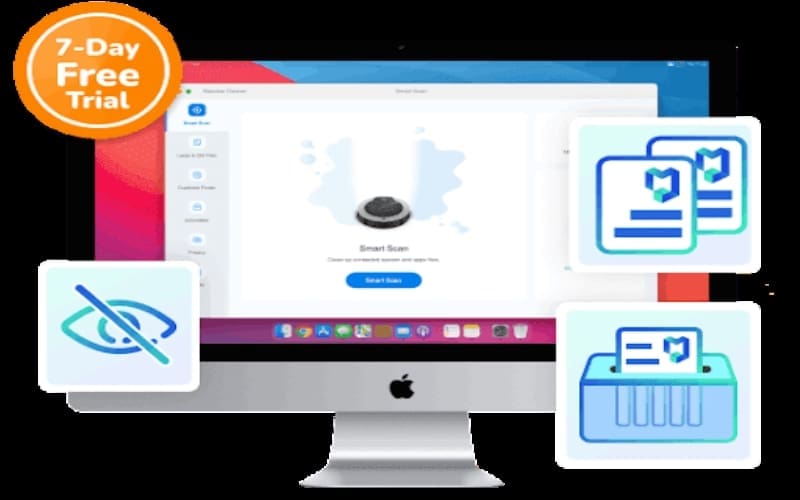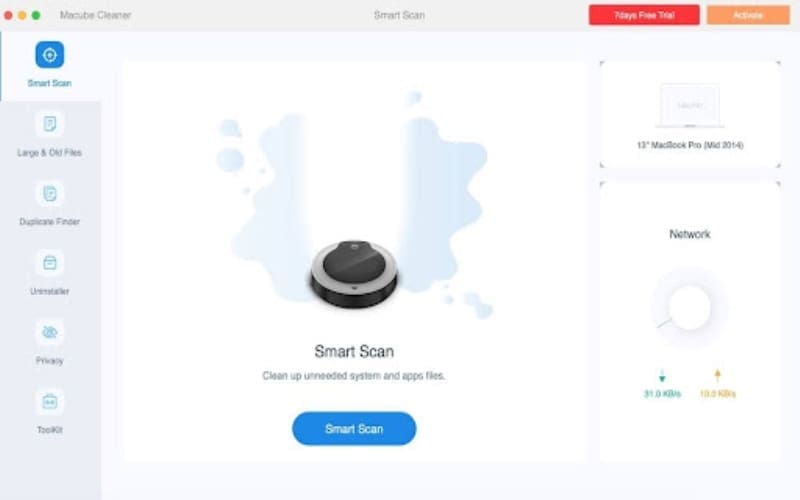
5 Common Ways to Check Mac Storage Usage
In the ever-evolving digital landscape, managing your Mac’s storage is crucial to ensure optimal performance and functionality. Whether you’re running out of space or simply curious about your storage usage, understanding how to check it is essential. In this article, we will explore five common methods to check your Mac storage usage. From utilizing third-party applications like Macube to native features like Finder, Get Info, and Disk Utility, and even the straightforward ‘About This Mac’ option, we’ll guide you through each method step by step. By the end of this article, you’ll have a comprehensive understanding of your Mac’s storage status, empowering you to make informed decisions about data management and storage optimization.
Why Is Most of My Storage Taken up by Other on Mac?
On a Mac, the “Other” category in storage typically includes various types of data that don’t fall into specific categories like Applications, Documents, or Media. This can include system files, cached files, temporary files, and more. Here are a few common reasons why the “Other” storage category might take up a significant amount of space:
System files:
macOS includes important system files and data that are categorized as “Other.” These files are crucial for the operating system to function properly.
Caches:
Temporary files and cached data generated by applications and the system are often included in the “Other” category. These files are meant to speed up certain processes, but over time, they can accumulate and take up space.
System backups:
If you use Time Machine or another backup solution, backups can contribute to the “Other” storage. Time Machine creates local snapshots of your system, and these can take up space until they are eventually deleted.
Mail attachments and messages:
If you use the Mail app, attachments and messages can contribute to the “Other” storage.
5 Common Ways to Check Mac Storage Usage
Method 1: Use Macube
In the realm of Mac optimization tools, Macube Cleaner distinguishes itself as a trustworthy solution, seamlessly addressing the task of identifying and eliminating duplicate files on Mac systems. Emphasizing the importance of thorough application removal and the quest for an organized workspace, Macube Cleaner places user contentment at the core of its design. By utilizing this tool, users can not only recover valuable disk space but also maintain a pristine Mac environment, effectively tackling prevalent issues associated with lingering app data.

How to check and clean:
- To check and clean the “Other Storage” on your Mac using Macube Cleaner, follow these steps:
- Download and install Macube Cleaner on your Mac.
- Open Macube Cleaner after installation.
Step 1: Choose Smart Scan
- In the main interface, choose the “Smart Scan” feature. This will allow the program to quickly find junk files, including those categorized under “Other Storage.”
- Click on the Smart Scan option, and Macube Cleaner will automatically scan your entire Mac for various types of junk files.
Step 2: Preview and Delete Unneeded Files
- After the scan is complete, you’ll see the results categorized by file types and sizes. Preview the files by clicking the magnifying glass icon to check their locations. Then, select the files you want to delete and click the “Clean” button. The cleanup process will take a few seconds.
Step 3: Large & Old Files
- If you want to target large files within the “Other Storage,” you can use the “Large & Old Files” feature. This function helps you locate and delete large and old files that might be contributing to the “Other Storage” space.
Method 2: From the Finder
To locate and clear “Other Storage” on your Mac using Finder, follow these steps:
Step 01: Locate “Other Storage” in Finder
- Open Finder and select “Go” from the top menu.
- Navigate to a folder.
- Copy and paste the following path: ~/Library/Caches.
Step 02: Review and Delete Unnecessary Files
- Explore the contents of the “Caches” folder to find files contributing to “Other Storage.”
- Be cautious and double-check before deleting to ensure you don’t remove any essential data.
Method 3: Get Info
To find and remove “Other” storage from Get Info on Mac, follow these steps:
Step 01: Select the File or Folder
- Right-click on the file or folder you want to check for “Other” storage and select “Get Info”.
Step 02: View Storage Breakdown
- In the Get Info window, you’ll see a breakdown of the storage usage, including how much space is occupied by different file types such as applications, documents, and “Other”.
Step 03: Identify “Other” Storage
- Look for the category labeled “Other.” This typically includes system files, caches, and temporary files that don’t fit into specific categories.
Step 03: Delete Unnecessary Files
- If you want to remove some of the “Other” storage, you can manually delete unnecessary files or folders by selecting them and moving them to the Trash. Be cautious not to delete essential system files.
Method 4: From Disk Utility
To find and remove “Other” storage from Disk Utility on Mac, follow these steps:
Step 01: Open Disk Utility
- You can do this by searching for it using Spotlight or by navigating to “Applications” > “Utilities” > “Disk Utility.”
Step 02: Select your disk
- In Disk Utility, you’ll see a list of disks on the left side. Click on the disk where you want to remove “Other” storage.
Step 03: Remove unnecessary files
- Look at the colored bar representing your disk’s usage. “Other” storage is shown in gray.
- To clear “Other” storage, you’ll need to delete unnecessary files and data from your disk. You can do this by manually deleting files or using disk cleanup tools.
Method 5: About This Mac
To find and remove “Other” storage from About This Mac on a Mac, you can follow these steps:
Step 01: Open About This Mac
- Click on the Apple menu in the top-left corner of your screen, then select “About This Mac.”
Step 02: View Storage
- In the “About This Mac” window, click on the “Storage” tab.
Step 03: Identify Other Storage
- You’ll see a breakdown of your storage usage. Look for the category labeled “Other.” This represents files and data that macOS doesn’t categorize under specific headings like Apps, Documents, etc.
Step 04: Remove Unnecessary Files
- To clear Other storage, you can manually delete unnecessary files and folders. Common culprits include temporary files, caches, and old backups. Use Finder to navigate through your files and delete what you don’t need. Remember to empty your Trash afterward to free up space permanently.
Bonus tip: What is “Other” storage on a Mac
“Other” storage encompasses files and data that don’t fit neatly into specific categories like apps, documents, or media. It includes a variety of items such as system files, caches, logs, plugins, and temporary files. While these files are crucial for the system’s functioning, they can accumulate over time and contribute to the growth of the “Other” category.
How to Manage “Other” Storage:
Use Built-in Tools:
Storage Management: Open “About This Mac” > “Storage” > “Manage” to use built-in tools to review and delete unnecessary files.
Clean System Caches:
Terminal Command: You can use Terminal commands to clear system caches. Be cautious and ensure you understand the commands before executing them.
Check Application Data:
Application Preferences: Some apps store a significant amount of data. Check preferences and settings within each app to manage their data.
Remove Unnecessary Plugins:
Application Preferences: Remove unused plugins from media editing applications to reduce “Other” storage.
Regularly Empty Trash:
Trash Bin: Items in the Trash still occupy space until you empty it. Regularly empty the Trash to recover storage.
Consider Third-Party Cleanup Apps:
Third-party apps like Macube Cleaner can help identify and clean unnecessary files, including those contributing to the “Other” category.
Conclusion:
In conclusion, effectively managing Mac storage is indispensable for maintaining a seamless computing experience. The methods outlined in this article provide users with versatile options to monitor and optimize their storage usage. From third-party applications like Macube Cleaner to native tools such as Finder, Get Info, Disk Utility, and ‘About This Mac,’ users can choose the method that best fits their preferences and needs.
Understanding the enigmatic “Other” storage category is pivotal in tackling storage challenges. By comprehending the various contributors, including system files, caches, and temporary data, users can make informed decisions about what to keep and what to discard. The step-by-step guides and bonus tips equip users with the knowledge to navigate through their Mac’s storage intricacies, empowering them to reclaim valuable disk space and ensure their system operates at peak efficiency.
In the ever-evolving digital landscape, where storage demands continue to grow, having a comprehensive understanding of Mac storage usage is an invaluable skill. Whether employing third-party tools for a thorough cleanup or utilizing native features for a more hands-on approach, users can now navigate their Mac’s storage landscape with confidence, optimizing performance and maintaining a well-organized digital workspace.

